 In 1866, when cattleman Charles Goodnight needed a way to keep his drovers fed while trailing cattle from Texas to points north, he took an old Army supply wagon and bolted to its back a wooden box divided into different compartments. He covered the box with a hinged lid that when opened and supported by a single leg could serve as a work table or wide shelf.
In 1866, when cattleman Charles Goodnight needed a way to keep his drovers fed while trailing cattle from Texas to points north, he took an old Army supply wagon and bolted to its back a wooden box divided into different compartments. He covered the box with a hinged lid that when opened and supported by a single leg could serve as a work table or wide shelf.
The box was a simple contraption, but it revolutionized the cattle industry. Food and cooking utensils were stowed in the pigeonholes of this traveling kitchen cabinet. There were other uses for the wagon as well. Bedrolls, medicine, lariats, branding irons, whiskey and water–they each found a place attached somewhere on the wagon.
It was no difficulty coming up with a name for Goodnight’s invention. Since early 17th Century England, individuals involved in the meat business referred to a lower priced part of the beef carcass as the “chuck.” Although less glamorous than other cuts, the chuck was an important source of nutrition for the working man.
By the next century “chuck” became a catch-all phrase for good, honest, heart-warming food. The term encompassed beef, vegetables, bread, dessert, coffee and anything else that could be eaten. On the ranch, the hands ate “chuck” at the “chuck” house.
Goodnight’s all-purpose compartment on the back of the Army wagon became the “chuck” box. And a wagon with a chuck box became a “chuck” wagon. The chuck wagon quickly gained independent status.
While the wrangler or trail boss set the rules outside the camp, he and all the other hands obeyed the cook within the sphere of the chuck wagon. Cookie, as he was often affectionately called, brooked no interference with his cooking or his utensils, but the cowboys never rebelled against his rule. They paid him tribute each day by roping dead mesquite or oak wood and dragging it into camp for the fire.
The chuck wagon was also the cowboy’s only known address—truly their home on the range. During the long trail drives, the chuck wagon was the headquarters of every cattle outfit on the range. The cowboys didn’t just eat their meals there; it was their social center and recreational spot. It was the natural gathering place for exchanging tall tales, listening to music if there happened to be a musician in the group, or just recounting the experiences of the day.
A good chuck wagon cook was hard to find and harder to keep. Because of this they earned double or more what the cowhands earned. Wagon cooks as a group had the reputation of being ill-tempered, and no wonder. Their working conditions usually left a lot to be desired. The nature of Cookie’s job required that he get up several hours earlier than the cowhands, so he worked longer hours with less sleep. When the outfit was on the move, he had to be at the next appointed camp and have a hot meal ready on time. He was often short on fuel or water. He was constantly called upon to battle the elements—wind, rain, sand, mud, insects, and even rattlesnakes—while preparing his meals. In addition to preparing meals, Cookie also was expected to act as barber, doctor, banker, and sometimes as mediator or referee if a disturbance among the cowboys arose. He was keeper of the home fires, such as they were, out on the range.
For the cowboys, there were definite rules of behavior around the chuck wagon. Most were unwritten laws understood by all but the greenest of cowhands. For example, riders approaching the campsite always stayed downwind from the chuck wagon so that they didn’t cause dust to blow into the food. No horse could be tied to the chuck wagon wheel or hobbled too close to camp. Cowboys looking for warmth never crowded around Cookie’s fire. There was no scuffling about or kicking up billows of dust around the chuck wagon while meals were being prepared.
When it came to eating, no cowboy dared help himself to food or touch a cooking instrument without Cookie’s permission. The cowboys never used Cookie’s worktable as a dining table; they sat on the ground and used their laps instead. When dishing out a helping of food from a pot, they placed the lid where it wouldn’t touch the dirt. It was against the rules for a cowboy to take the last piece of anything unless he was sure the rest of the group was through eating. If a man got up during a meal to refill his cup with coffee and someone yelled, “Man at the pot,” he was supposed to fill all the cups held out to him as well as his own.
After a meal, the cowboys always scraped their plates clean and put them in the wash tub. Like most rules of etiquette, the rules around the chuck wagon were based on concern for others and common sense.
Along with sourdough biscuits and coffee, most chuck wagon meals included beans, or frijoles, as they were often called. Beef was something that was never in short supply, and a good chuck wagon cook knew how to prepare it in many different ways. Fried steak was the most common—the cowboys never seemed to get tired of it—but pot roasts, short ribs, and stew showed up often on the menu.
If Cookie had time, and he was feeling kindly toward “the boys,” as he called the cowhands, he would make a dessert. Usually it was a two-crust pie made with apples or some other dried fruit. To let the steam out, he often cut the outfit’s brand into the top crust of the pie.
Simple food, a seemingly monotonous menu, and less than ideal dining arrangements were standard on the range. Yet many retired cowboys get misty-eyed when they recall their food from their days with the wagon.
Chuck Wagon Etiquette
No one eats until Cookie calls.
When Cookie calls, everyone comes a runnin’.
Cowboys eat first, talk later.
Hungry cowboys wait for no man. They fill their plates, fill their bellies, and then move on so stragglers can fill their plates.
It’s okay to eat with your fingers. The food is clean.
If you’re refilling the coffee cup and someone yells “Man at the pot” you’re obliged to serve refills.
Don’t take the last serving unless you are sure you’re the last man.
Food left on the plate is an insult to the cook.
No running or saddling a horse near the wagon. And when you ride off, always ride downwind from the wagon.
If you come across any decent firewood, bring it back to the wagon.
Strangers are always welcome at the wagon.
 For those Lucky Charms fans who eat all the marshmallows out of the cereal—you know who you are—these jet-puffed “mallow” bits are for you!
For those Lucky Charms fans who eat all the marshmallows out of the cereal—you know who you are—these jet-puffed “mallow” bits are for you!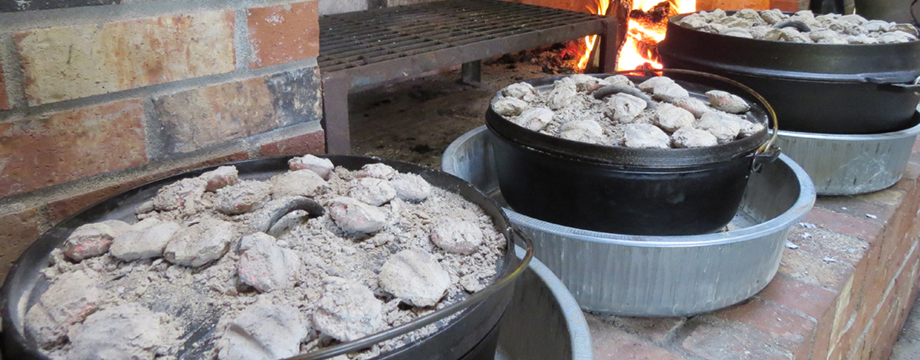



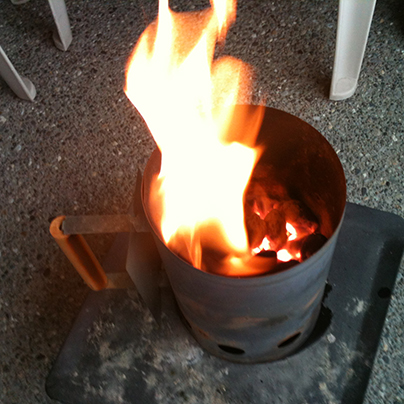

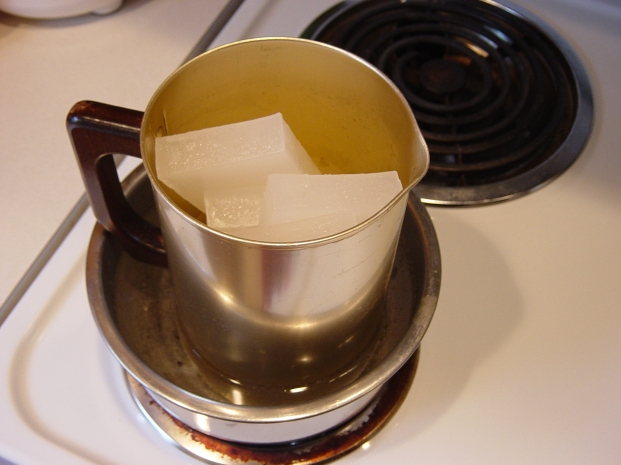

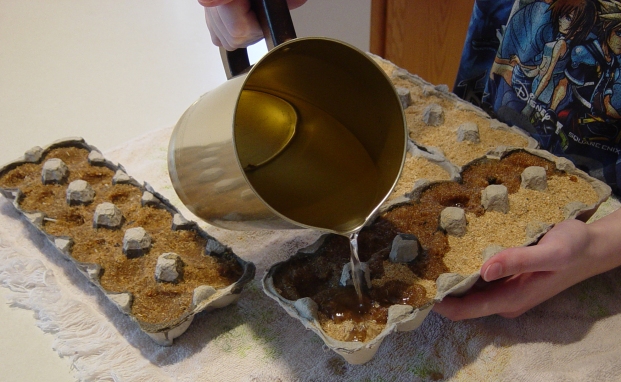
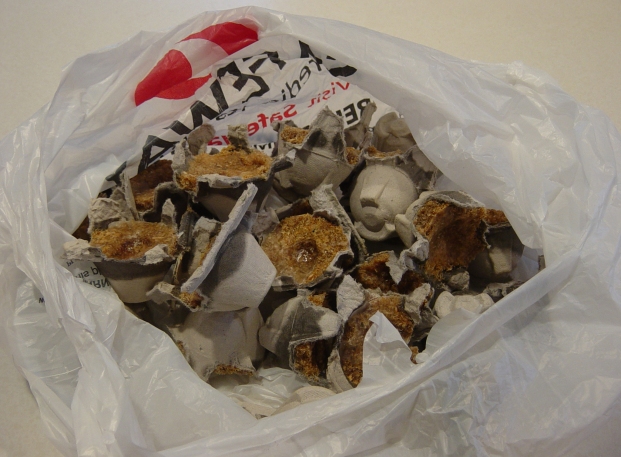













Recent Comments